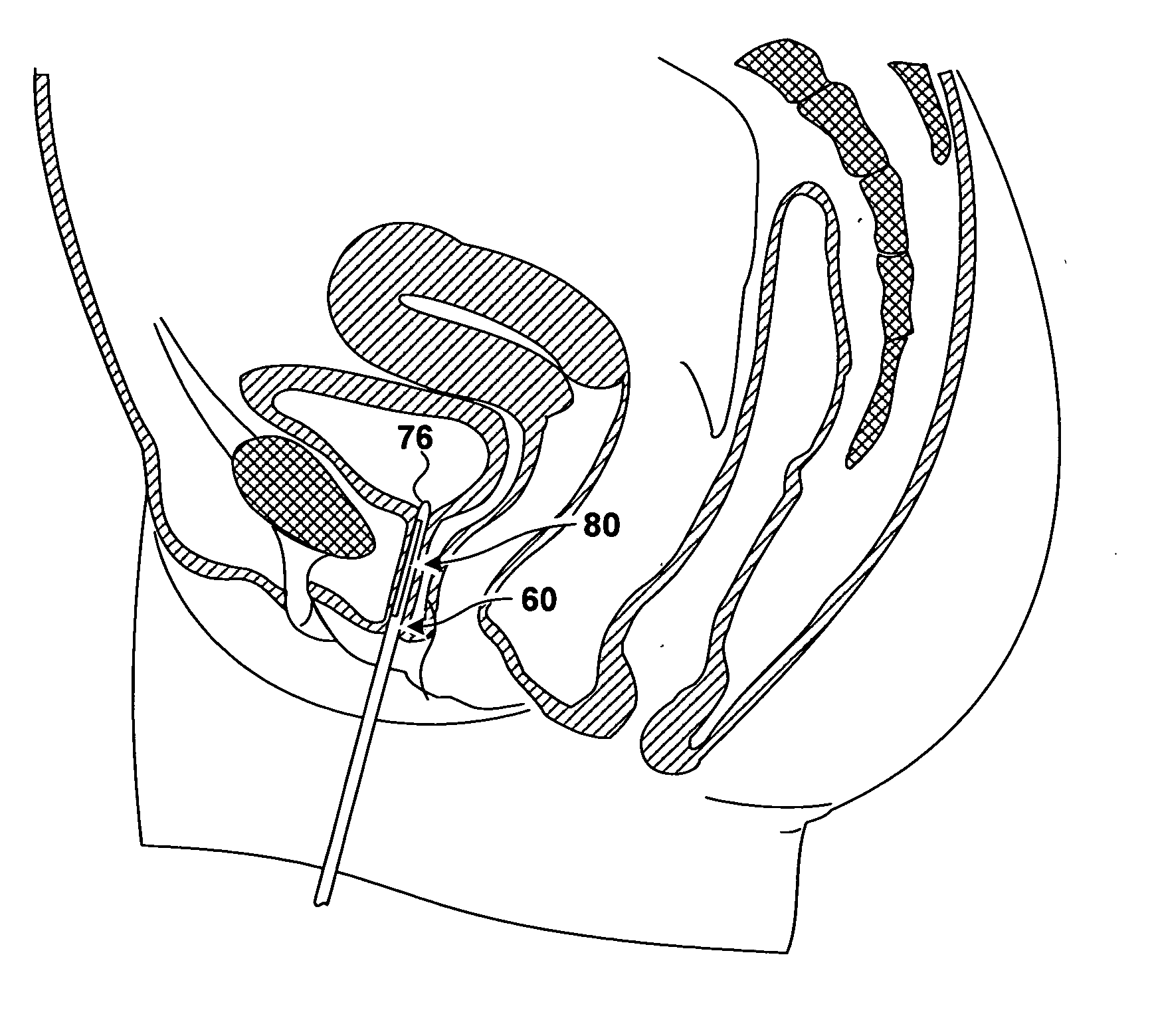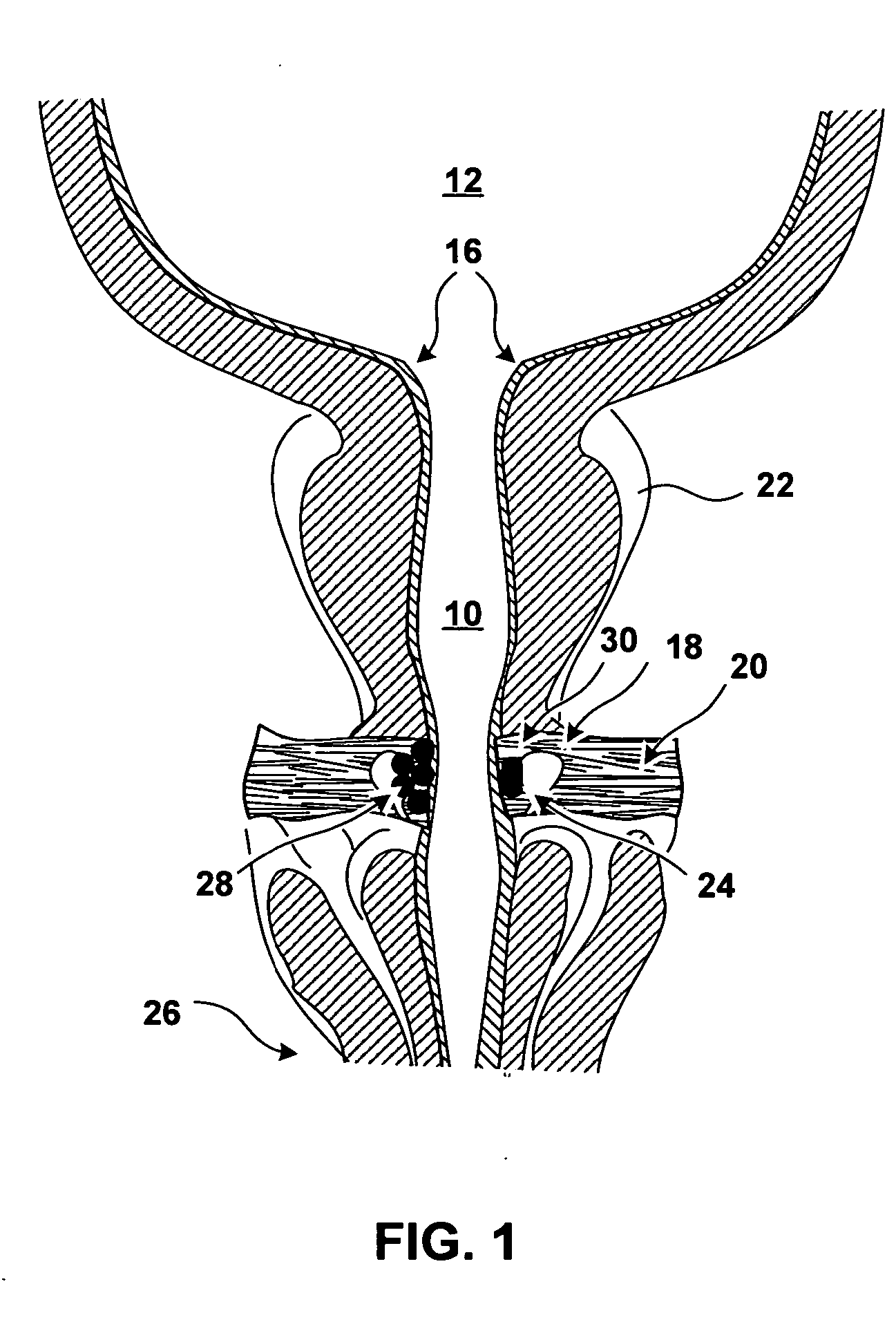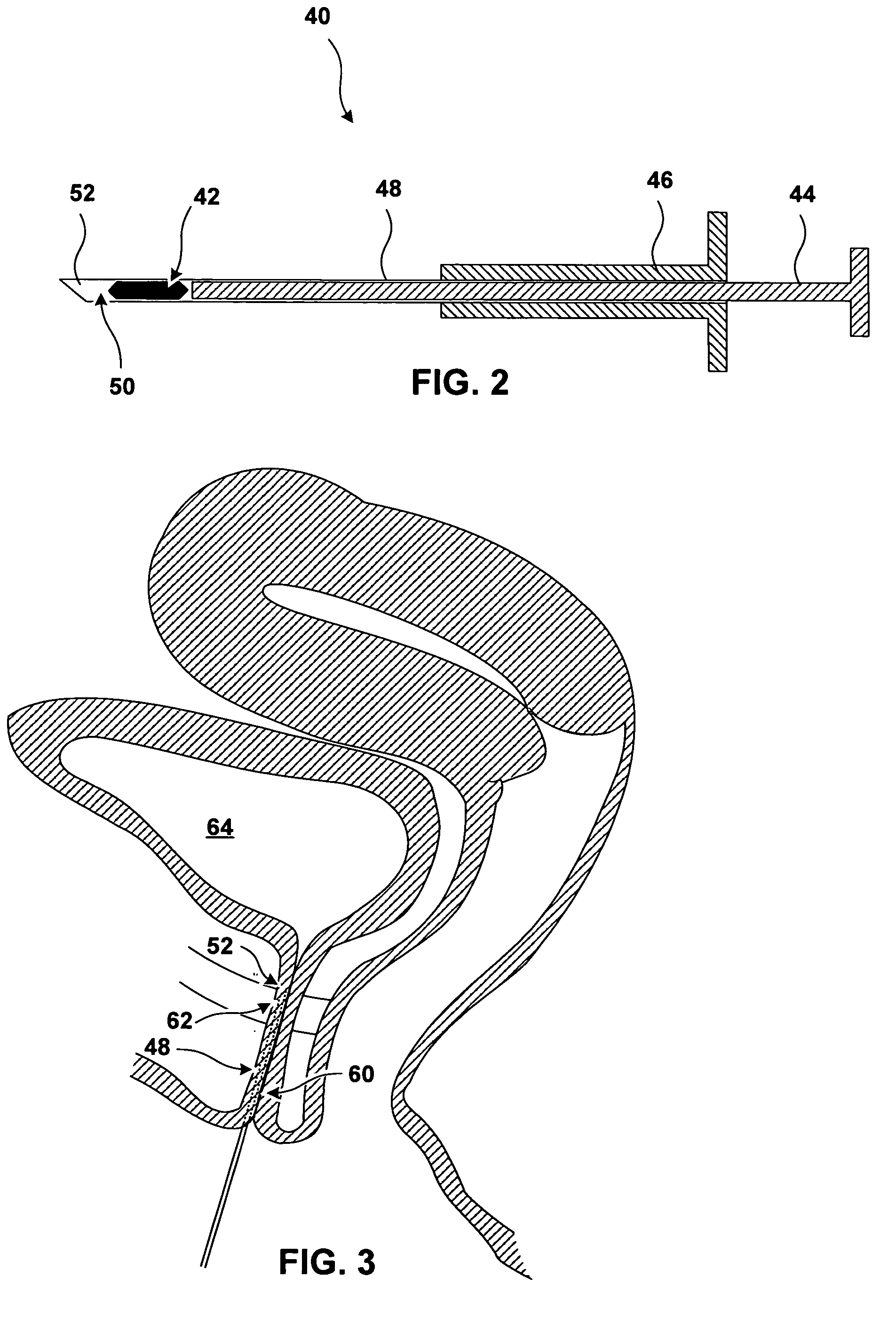Implantable devices and methods for treating urinary incontinence
a technology of urinary incontinence and implantable devices, which is applied in the field of medical devices, can solve the problems of inconvenient patient treatment, invasive surgery that may be required, and the effect of effective treatmen
- Summary
- Abstract
- Description
- Claims
- Application Information
AI Technical Summary
Benefits of technology
Problems solved by technology
Method used
Image
Examples
Embodiment Construction
[0023]FIG. 1 is a coronal cross section of anatomical structures surrounding a urethra 10 of a male patient. Urethra 10 is a tube, including a wall and a lumen, that extends from the urinary bladder 12 to an external urethral orifice (not shown in FIG. 1). Flow of urine from bladder 12 and through urethra 14 is controlled by an internal urinary sphincter 16 and an external urinary sphincter 18. Internal urinary sphincter 16 is not really a separate muscle, but is a portion of bladder 12 that operates as a sphincter. Internal urinary sphincter 16 is not under voluntary control of the patient.
[0024] External urinary sphincter 18 is further away from bladder 12 than internal urinary sphincter 16. External urinary sphincter 18 encircles urethra 10 and is reinforced by the pelvic diaphragm 20. Contraction and relaxation of external urinary sphincter 18 is under the voluntary control of the patient.
[0025] These properties of the external urinary sphincter are true in women as well as in...
PUM
| Property | Measurement | Unit |
|---|---|---|
| length | aaaaa | aaaaa |
| diameter | aaaaa | aaaaa |
| diameter | aaaaa | aaaaa |
Abstract
Description
Claims
Application Information
 Login to View More
Login to View More - R&D
- Intellectual Property
- Life Sciences
- Materials
- Tech Scout
- Unparalleled Data Quality
- Higher Quality Content
- 60% Fewer Hallucinations
Browse by: Latest US Patents, China's latest patents, Technical Efficacy Thesaurus, Application Domain, Technology Topic, Popular Technical Reports.
© 2025 PatSnap. All rights reserved.Legal|Privacy policy|Modern Slavery Act Transparency Statement|Sitemap|About US| Contact US: help@patsnap.com



